Author: Chen Nianhang
At the launch events of the Ideal L8 and L7, Li Xiang announced that the delivery volume of the Ideal L9 has exceeded 10,000 units in September. It is worth noting that the delivery only started on August 30 and the sales price is 460,000 yuan. Such a high sales efficiency is unprecedented, making us even more excited about the delivery performance of the L8 and L7 in the future.
In the autumn launch event on September 30, Ideal Auto not only released the upgraded model of Ideal ONE – Ideal L8, but also brought its sibling, Ideal L7, to the market. L8 is a six-seater luxury SUV, while L7 is a five-seater flagship SUV, and both have two versions: Pro and Max, for a total of four models.
This also confirms Li Xiang’s previous statement on social media, “using four times the pressure to attack the medium to large intelligent SUV market.”
How can the Ideal L8 withstand the four times the pressure of its competitors?
The most concerned issue is still the price:
- L8 Pro price: 3.598 million yuan
- L8 Max price: 3.998 million yuan
- L7 Pro price: 3.398 million yuan
- L7 Max price: 3.798 million yuan
In addition, different models provide optional configurations for car paint color, wheel size, and electric pedals, with prices ranging from 10,000 to 30,000 yuan.
L8 models immediately started accepting pre-orders, with an estimated delivery date at the end of November. Taking advantage of the National Day holiday and the lucrative sales season from October to December, L8 has arrived in front of consumers to seize the best opportunity in the automotive market.
However, L7 models will have to wait a bit longer. They will debut at the Guangzhou Auto Show in November and start delivery in late February 2023, but pre-orders can be placed now.
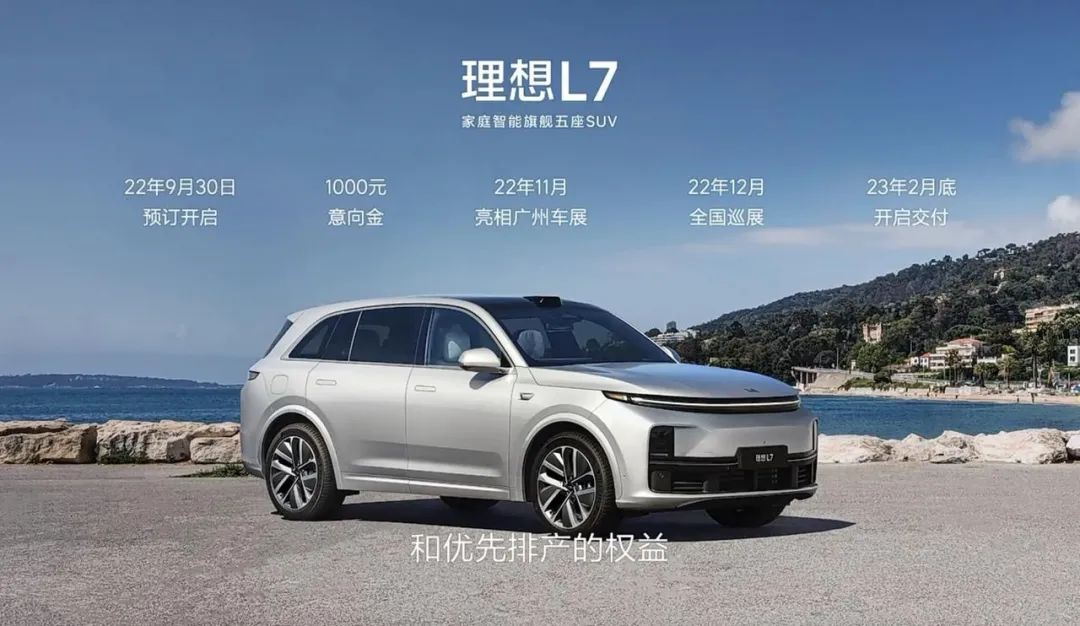 Two new cars are available in four versions, ranging from 339,800 to 399,800 yuan. They are suitable for both five and six passengers. With such detailed product positioning, ideal is able to edge out its peer electric SUVs.
Two new cars are available in four versions, ranging from 339,800 to 399,800 yuan. They are suitable for both five and six passengers. With such detailed product positioning, ideal is able to edge out its peer electric SUVs.
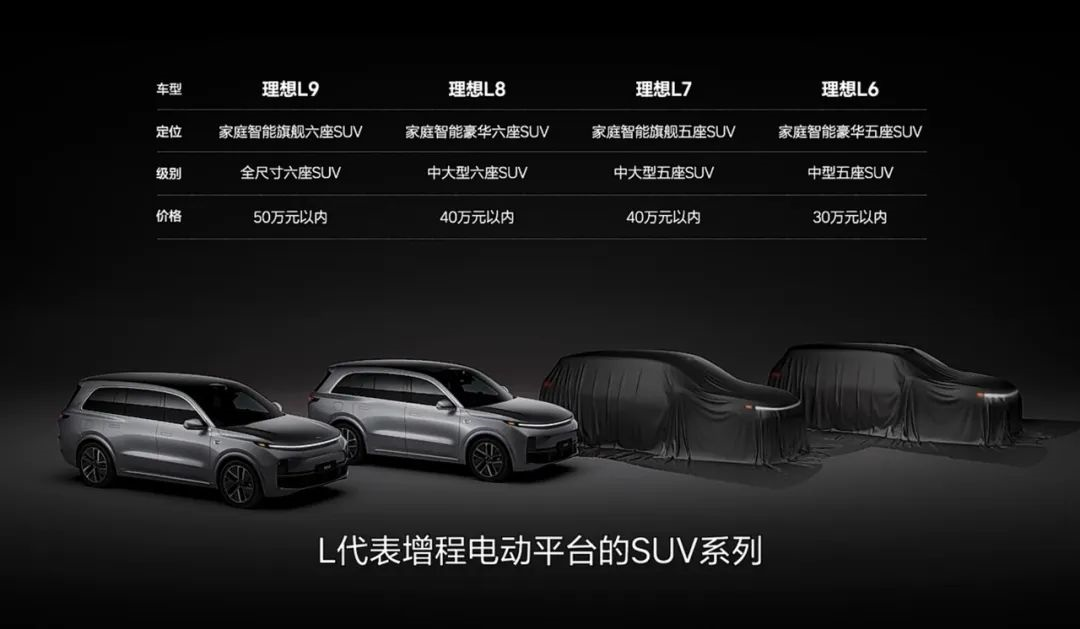
Moreover, let’s not forget about ideal’s other car models that are currently on sale or being planned:
- The smart flagship six-seater SUV ideal L9 costs less than 500,000 yuan.
- Ideal will release a smart luxury five-seater SUV ideal L6 that costs less than 300,000 yuan in the future.
Basically, L6, L7, L8, and L9 cover all the requirements for five and six-seater SUVs priced from 300,000 to 500,000 yuan. You do not need to look at other brand models as you can find almost all sizes of SUVs from ideal.
These are just ideal’s extended range platform car models, and in the future, pure electric platform car models will continue to target the SUV market, making ideal a formidable opponent for all other competitors.
Because the release of L7 was hinted in Li Xiang’s “One More Thing” and it will not be available for sale for a while, this article will not delve into the details of L7. The focus of this article is still on ideal L8.
Ideal L8 offers two versions: Pro and Max.

As the direct successor of ideal ONE, how capable is L8 in terms of product performance?
It is said that ideal L8 is the successor to ideal ONE after the latter stopped production.
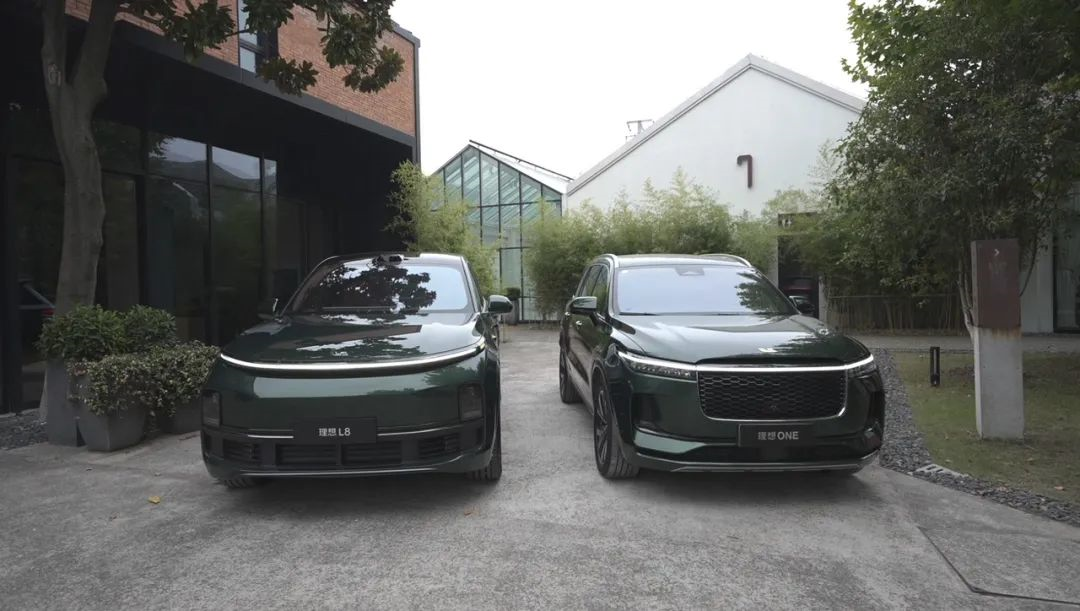
Originally planned to be launched in November, L8 has been brought forward to the end of September. Many people speculate that this change was made to compete with XPeng G9, and to take advantage of the favorable timing in the auto market’s peak season.
So, what are the highlights and competitive advantages of L8?
Just like ideal ONE, L8 is also a mid to large six-seater SUV.
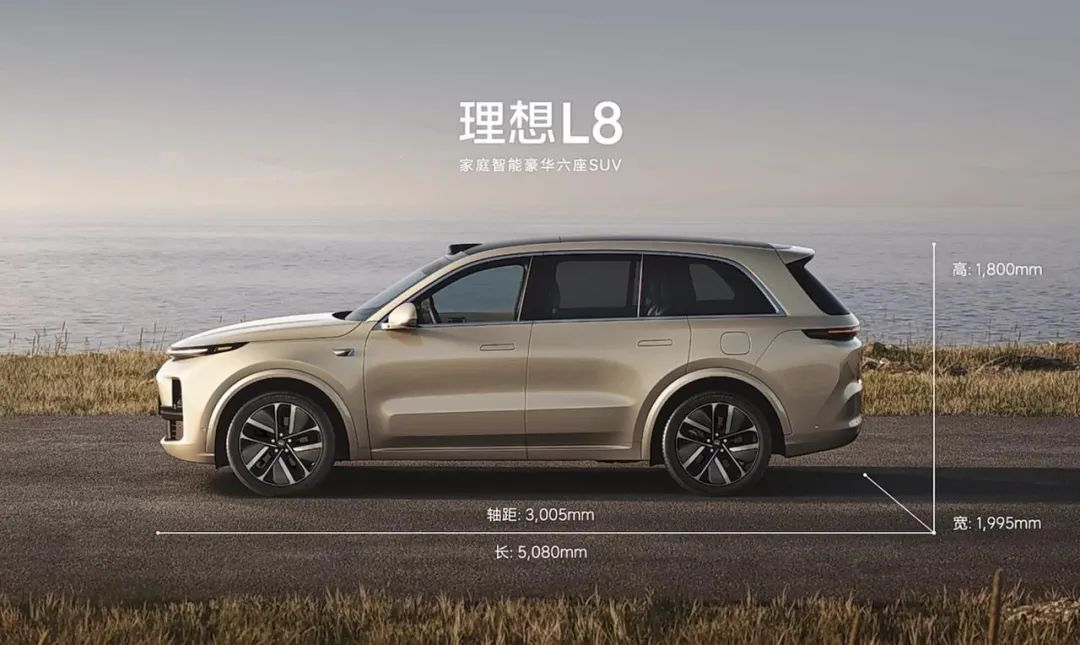 The length and wheelbase of L8 are 13.8cm and 10cm shorter than L9, resulting in a reduced space in the third row.
The length and wheelbase of L8 are 13.8cm and 10cm shorter than L9, resulting in a reduced space in the third row.
The exterior design of L8 is basically the same as L9. Therefore, we will mainly focus on the intelligence and space parts of L8.
The Ideal L8 offers two versions, Pro and Max, with only a six-seater configuration. The main difference between Pro and Max is the intelligent ability, including Advanced Driving (AD) and Smart Space (SS), which includes intelligent cockpit, screen, and audio system.
Max is one level higher than Pro, and the naming is inspired by iPhone, indicating that smart cars are getting more and more like smartphones.
- AD Pro is equipped with the world’s first Horizon Journey 5 (J5) chip (1 piece), 800 MP forward vision (1 piece) + 800 MP surrounding vision (4 pieces) + 200 MP surrounding vision (1 piece) + 200 MP panoramic vision (4 pieces) + Forward millimeter wave radar (1 piece), with standard functions such as ACC, LCC, and high-speed NOA assisted driving.
- AD Max is equipped with the same functions but with the world’s first Horizon Journey 5+ (J5+) chip (2 pieces) and additional features such as AR Navigation.
SS Pro adopts one Qualcomm Snapdragon 8155 chipset and a four-screen interactive system for front-row (HUD, safe-driving interactive screen, and two 15.7-inch LCD screens).
SS Max has the same functions as SS Pro but with a rear-seat entertainment system.
AD Max adopts two OrinX chips from NVIDIA and Hesai LiDAR, equipped with a LiDAR (1 piece), an 800MP forward-view camera (2 pieces), a 200MP surround-view camera (4 pieces) and a 200MP side-view camera (5 pieces), as well as a forward-facing millimeter-wave radar (1 piece) and a complete set of autonomous driving safety redundancy systems. It can support up to city-level intelligent assisted driving, such as city-level navigation assisted driving and point-to-point intelligent driving experience.
SS Max is equipped with Qualcomm’s dual Snapdragon 8155 chips and a five-screen three-dimensional spatial interaction system (HUD, safety driving interaction screen, and three 15.7-inch LCD screens for front and rear passengers).
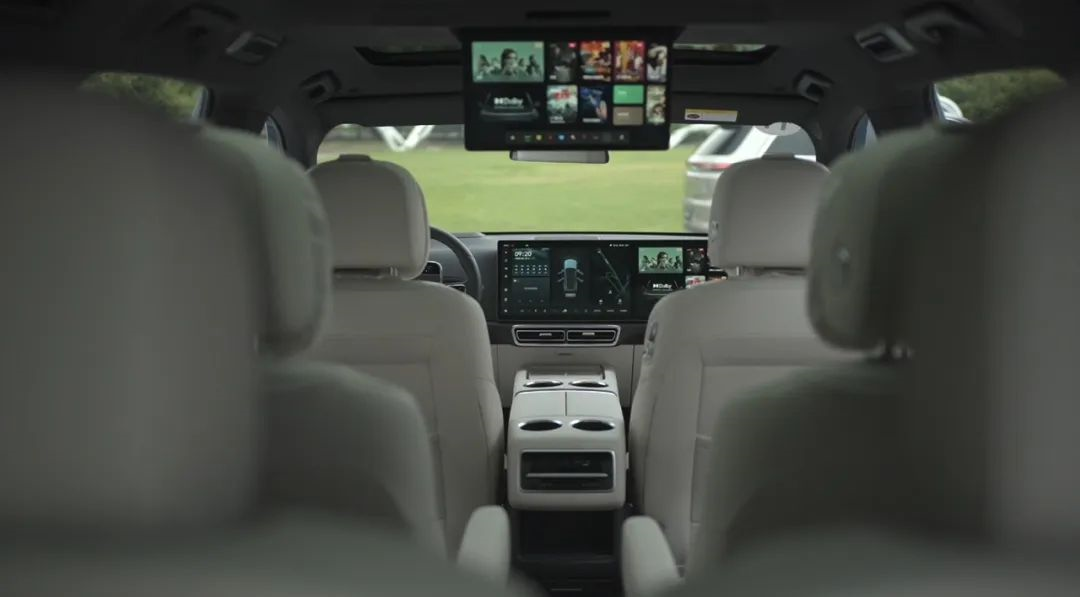
AD Pro with Journey 5 is mainly designed for consumers who do not need advanced assisted driving. They only need ACC and LCC, and AD Pro also has high-speed navigation assisted driving, which can fully meet the needs of this part of consumers and save them some money by removing the LiDAR.

“The popularity of the ideal car model has indeed driven the rise of many domestic supply chains, and Horizon is one of the major beneficiaries.”
Overall, I tend to think that L8 Pro is the direct replacement model of the ideal ONE, while L8 Max is equivalent to the smaller L9 model in size.
Speaking of the interior space of the L8, let’s take the L8 Max as an example to show you its spacious performance.
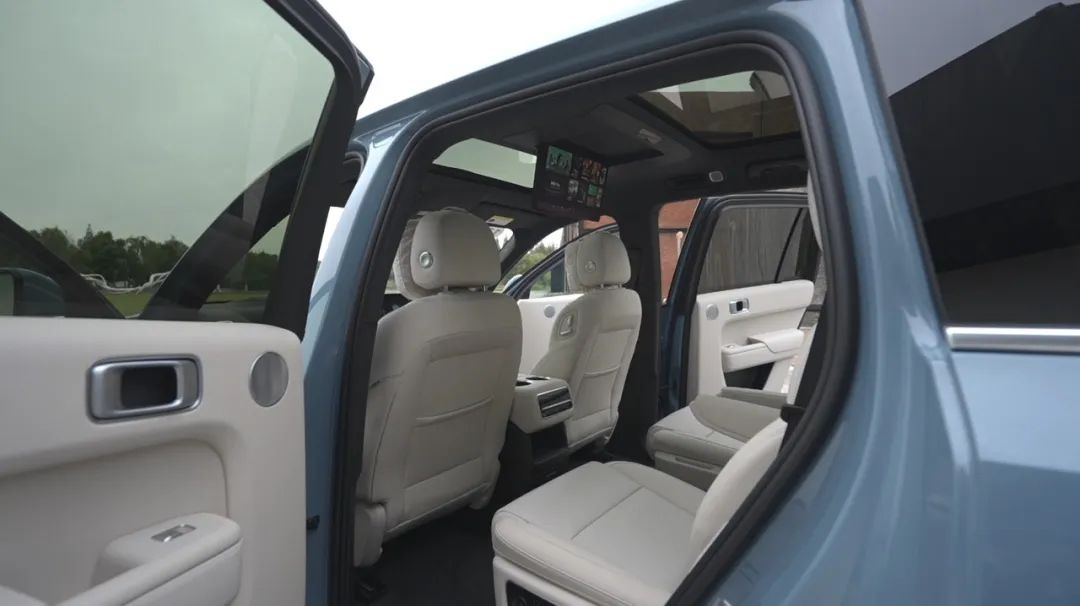
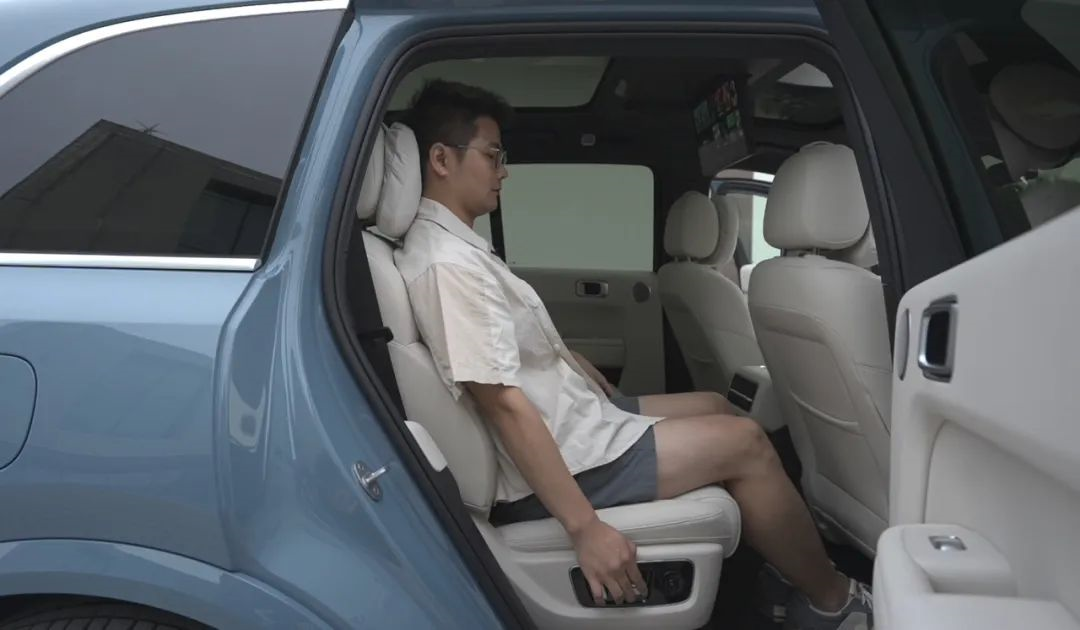
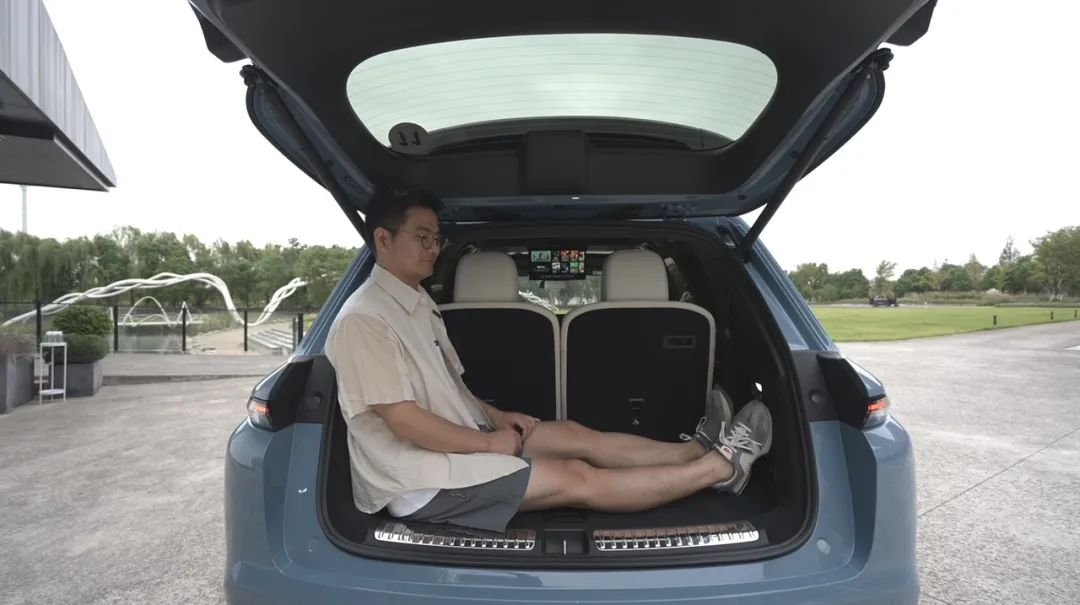

Regarding the space of L8, let’s summarize:
The space performance of the first two rows is not much different from that of L9, and the main difference is in the third row.
Let’s focus on the space performance of the third row. The third row of L8 is a bit cramped, and the legroom and headroom are not very good. However, it is worth mentioning that the third row seats of L8 can support electric adjustment of the backrest angle.
If we compare L8 with ONE, the space performance is definitely significantly improved.
In terms of the intelligent cabin experience, because the model we tried this time is L8 Max, the biggest difference between L8 and L9 is the material of the central control screen.
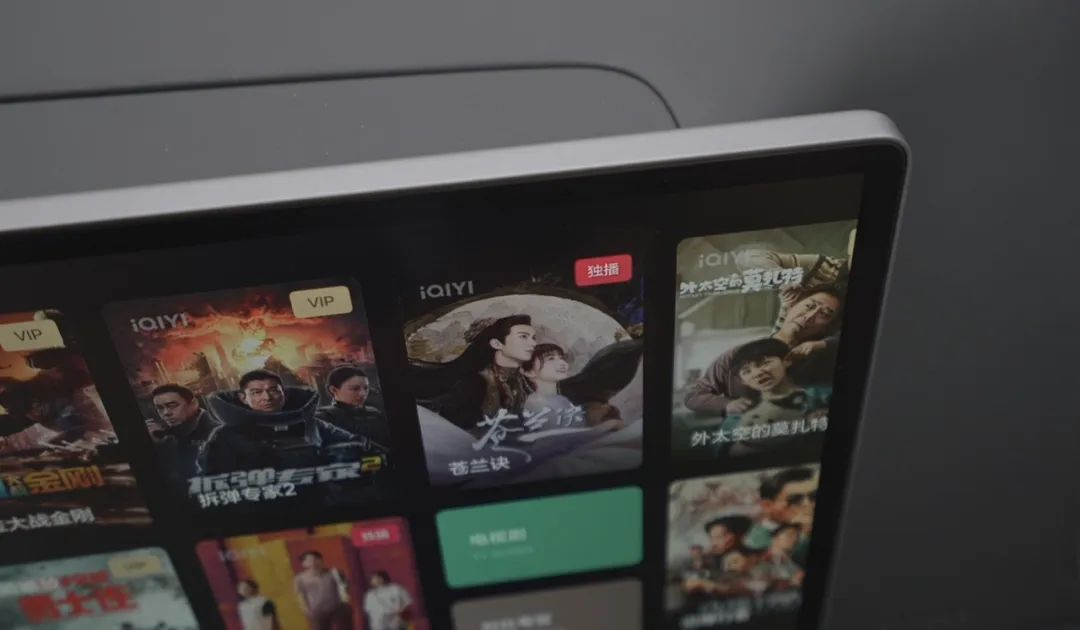
L9 uses OELD screen, while all models of L8 use LCD screen. The biggest difference between the two is the thickness of the screen. The LCD screen is thicker, which may bring some pressure to heat dissipation. In addition, the texture performance of the black border of the screen at different brightness levels may vary.
However, on the L8 Pro version, since there is no rear screen, only one Qualcomm 8155 chip is used. I am not sure if the operation of the car system will be slower because of this change.
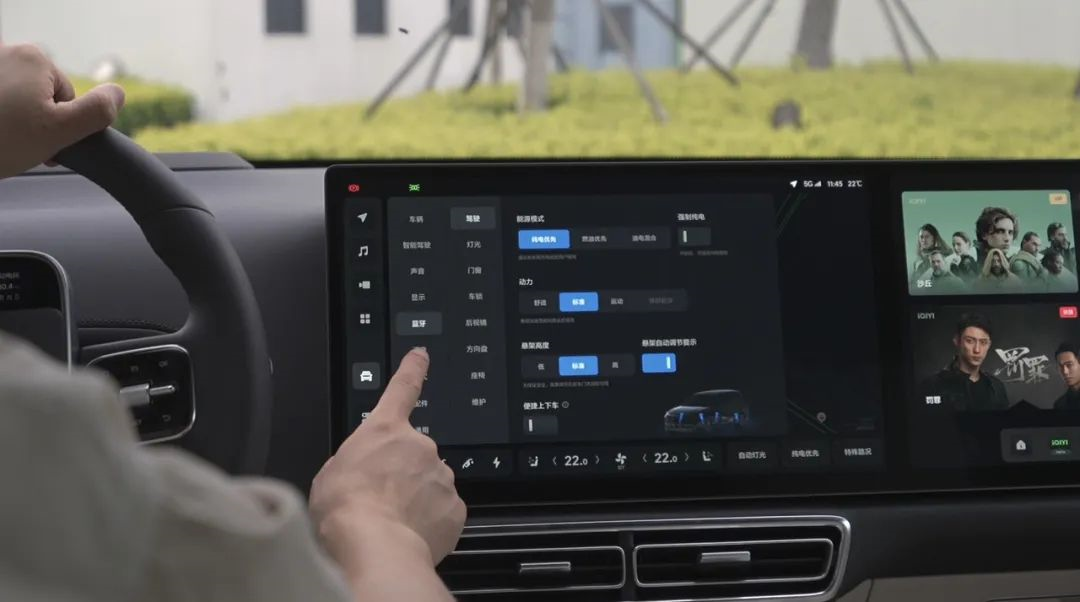
The power system of L8 is very similar to that of L9: dual motor four-wheel drive, with an output power of 330 kW (130 kW front + 200 kW rear), a maximum torque of 620 N·m, and acceleration of 5.5 seconds per hundred kilometers.
Battery capacity: 42.8 kWh ternary lithium battery, which is slightly smaller than that of L9.
- CLTC comprehensive cruising range of 1315 kilometers
- WLTC 1100 kilometers
- CLTC pure electric range of 210 kilometers
- CLTC thermal engine oil consumption of 5.9 liters
The suspension structure is a front double-wishbone and rear five-link structure, with air suspension.
In terms of fuel consumption, the official data shows that the minimum charge fuel consumption of Ideal L8 is 7.7 L/100 km (WLTC cycle), while the minimum charge fuel consumption of Ideal ONE is 8.8 L/100 km (WLTC cycle). The size of L8 is bigger than ONE and even more fuel-efficient, but of course, fuel consumption data may vary from person to person and is only used as a reference.# Ideal for L8 is to become the preferred mid-to-large-sized SUV for households under 400,000 RMB. I believe that L8 Pro will be the best-selling model, as buying L8 Max is not as cost-effective as going directly to L9.
The biggest problem with L8 Pro is that its intelligent driving system might not work well in cities, as it has a low ceiling due to its lack of laser radars.
6-7 RMB difference, should you choose L8 or L9?
In terms of price, L8 is 6-10 RMB cheaper than L9, so what are the differences between the two?
Li Xiang has a very vivid metaphor for L8 and L9: L9 is a 180-square-meter flat villa, while L8 is a luxurious three-bedroom apartment with 120 square meters.
Taking L8 Max as an example, the differences with L9 are:
In terms of appearance: The front face, laser radar styling are the same, and the major differences are in size, D pillars, and tail styling.
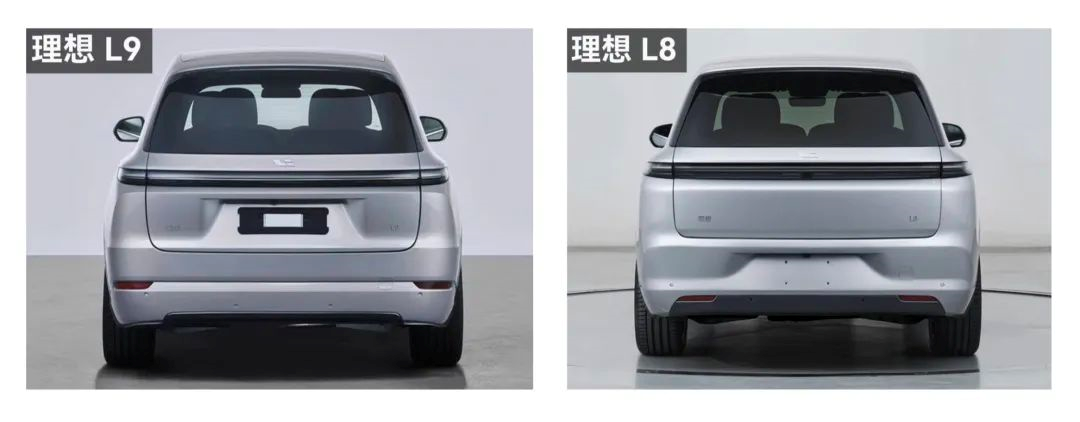
L8 is smaller than L9.
The two cars differ by 13.8cm in length and 10cm in wheelbase, mainly in the third-row space.
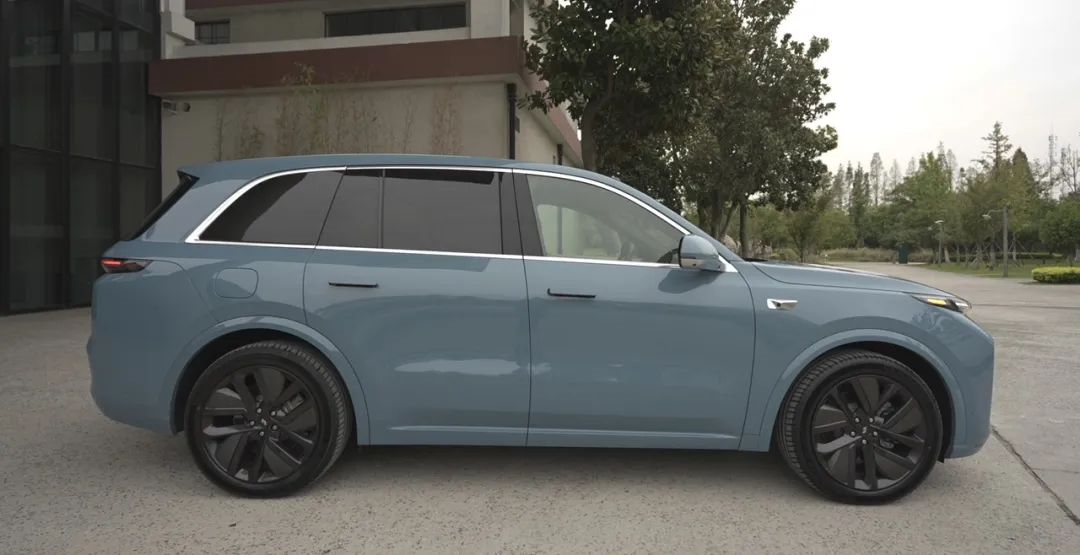
The D pillar and tail styling have differences, mainly in the position of the license plate and the rear trunk opening button.
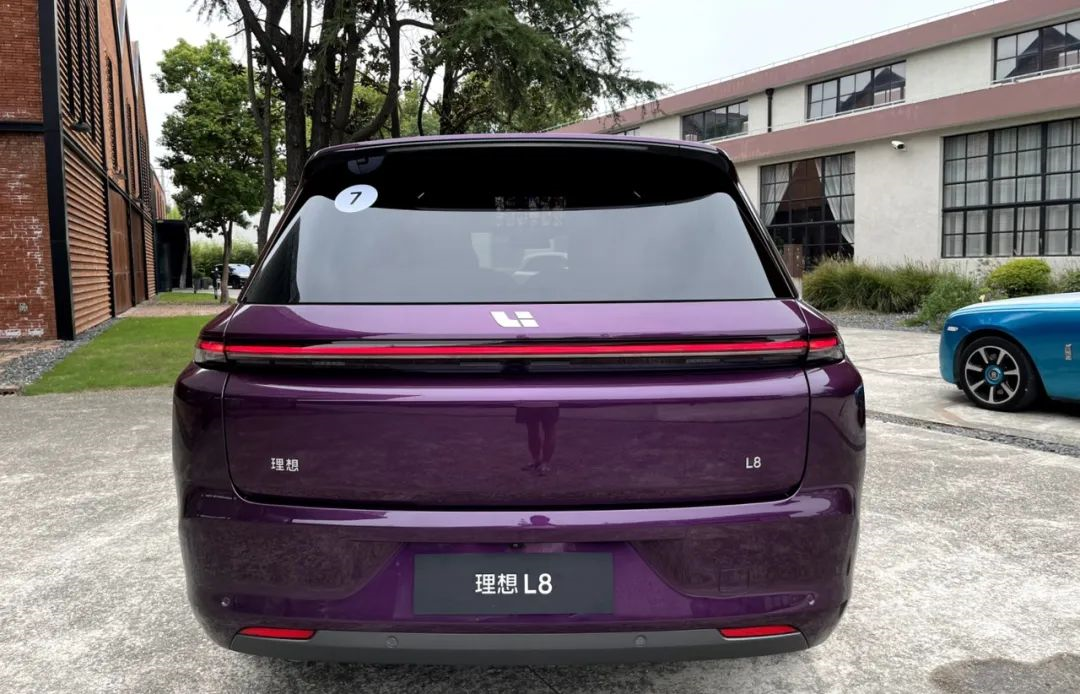
A fun fact: L8 is 40kg lighter than L9.
In addition, the battery capacity is different. Both cars use ternary lithium batteries, with L9 having 44.5 kWh and L8 having 42.8 kWh, so the pure electric cruising range of L8 will be shorter.
In terms of luxury configurations, L8 eliminates the small tray and legs support for VIP seats and cancels the second-row refrigerated and heated boxes.
Compared with L9, the massage functions of the front two rows of seats are also different, one being SPA-level, and the other being lumbar support, which is the difference between luxury and flagship.
There are also some differences in the sound systems: The L8 Pro model is equipped with a 7.3.4 panoramic sound system with 19 speakers, while the L8 Max and L9 are equipped with 20 speakers.The Ideal L8 comes with 20-inch wheels as standard, with the option to upgrade to 21-inch wheels. The L9, on the other hand, comes with 21-inch wheels as standard.
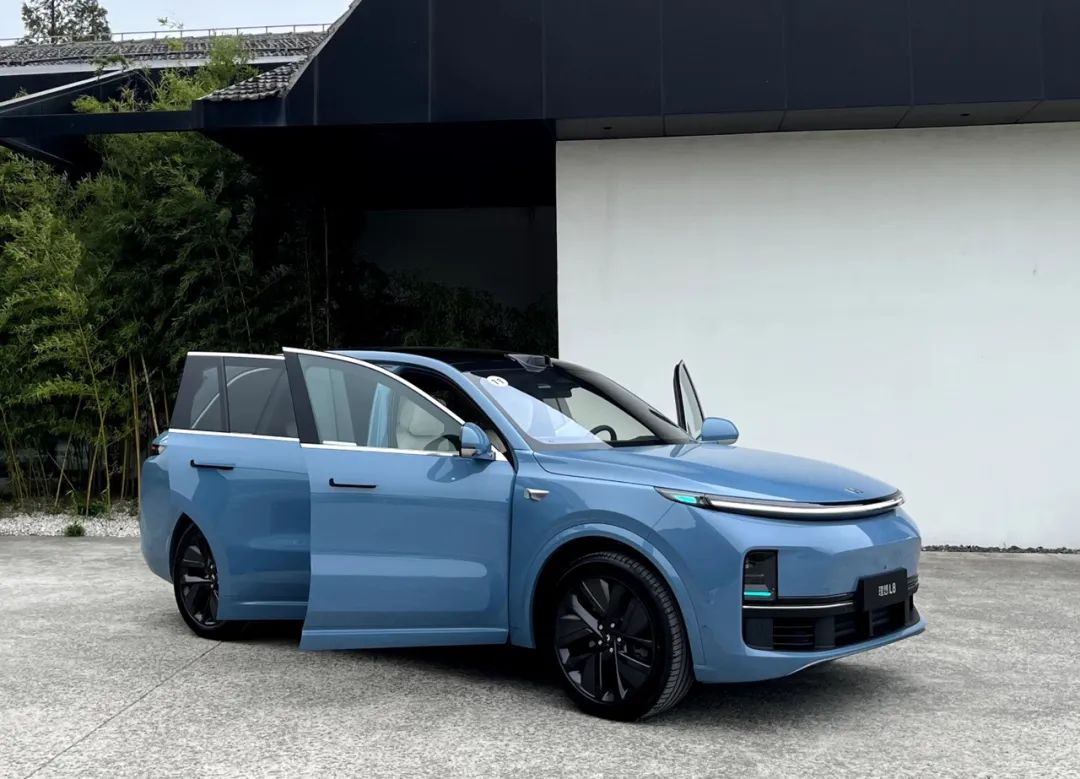
Regarding intelligent driving and smart cockpit systems, the L8 Max and L9 are the same, except for the material used for the central control’s screens, which have shifted from OLED to LCD. However, there is hardly any noticeable difference to the naked eye.
If we compare the L8 Pro and the L9, besides the differences mentioned above, there are still more differences. The L8 Pro uses the Horizon J5 chip and comes with standard high-speed NOA navigation assistance driving. It also has one Snapdragon 8155 chip and a four-screen interactive system for the front row, which includes a head-up display (HUD), safety driving interactive screen, and two 15.7-inch LCD screens.
The L9, on the other hand, uses two Nvidia OrinX chips, a Hesai LiDAR, and a complete set of automatic driving safety redundancy systems. It also has two Snapdragon 8155 chips and a five-screen 3D spatial interactive system, which includes a head-up display (HUD), safety driving interactive screen, and three 15.7-inch OLED screens for the front and rear rows.
Finally, let’s compare the three models: L8 Pro vs L8 Max vs L9.

Ultimately, which car model you choose depends on your specific needs. Additionally, it’s worth noting that the flagship Ideal L7, a five-seater model, is also coming soon.
Avoiding Both “Bottlenecks” and Being a “Closed-door Automaker”
In August of this year, Ideal delivered 4,571 new cars, with a total historical delivery of 199,484 vehicles. The L9 was already delivered at the end of August, and in September, more than 10,000 vehicles were sold. As a new car manufacturer, the company now has over 200,000 household users.
Sales figures merely represent the tip of the iceberg. Supporting these diversified products and respectable sales figures are Ideal’s self-developed technology reserves and continuous improvement in production and manufacturing processes.
Before the official launch of L8 and L7, Li Xiang devoted considerable space to reviewing Ideal’s accumulation of self-developed capabilities, including an air-booster, electric drive, air suspension, silicon carbide power devices, intelligent spatial Li AI, and intelligent driving algorithms. The review also included support and cultivation at the supply chain end, as well as factory, production automation, and production line management software at the production end.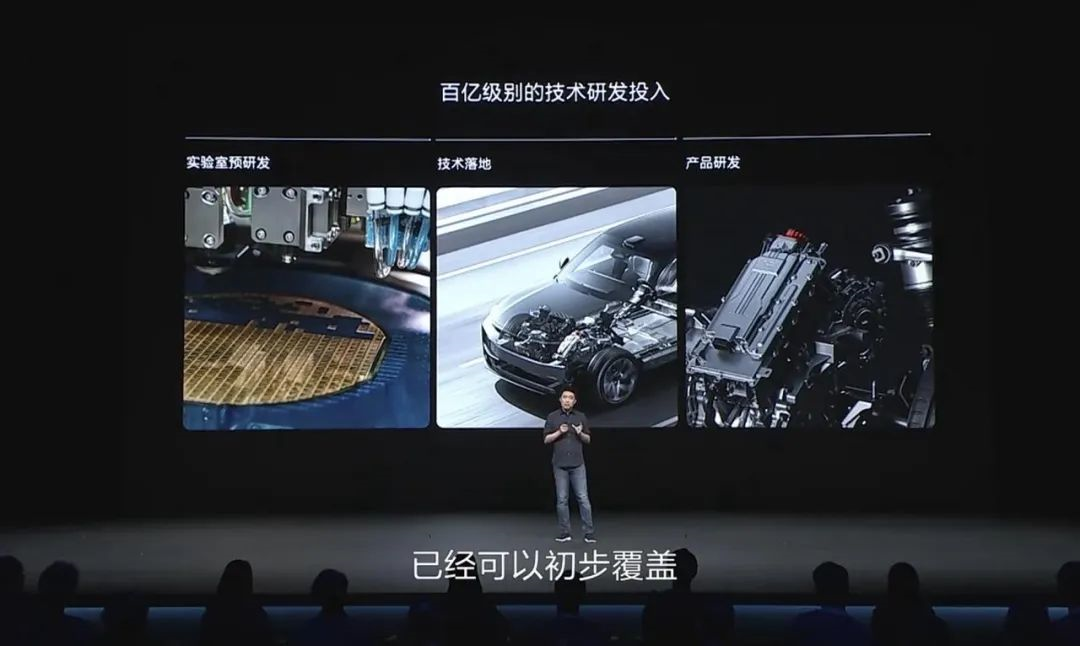
In terms of self-developed technology, Ideal is developing silicon carbide power chips for the future mass production of 800V high-voltage pure electric vehicle platforms (W platform for pure electric vehicle models), and is also building a silicon carbide power module production plant in Suzhou with an annual production capacity of more than 2.4 million half-bridge power modules.
At the same time, Ideal is investing in research and development in fields such as vehicle controllers, air suspension, Li AI smart cabins, and intelligent driving algorithms (BEV model algorithms, high-precision maps, interactive prediction).
Especially in the field of autonomous driving, Li Xiang has set a goal to achieve Level 4 autonomous driving on highways and enclosed roads by 2025.

On the supply chain side, Ideal is controlling the initiative of many key component supplies through investment and joint ventures. Li Xiang also made it clear that Ideal will guarantee that 30% of the components are self-produced, neither letting others “choke” nor “building in secrecy.”
On the production side, Ideal’s Changzhou intelligent manufacturing factory has achieved 95% automation and 1,200 robots have been put into use. The production line also uses the self-developed management software Li-MOS, and production data can be accurately traced. Meanwhile, Ideal’s Beijing intelligent manufacturing base is preparing for production and will produce two flagship models, extended range and pure electric cars.
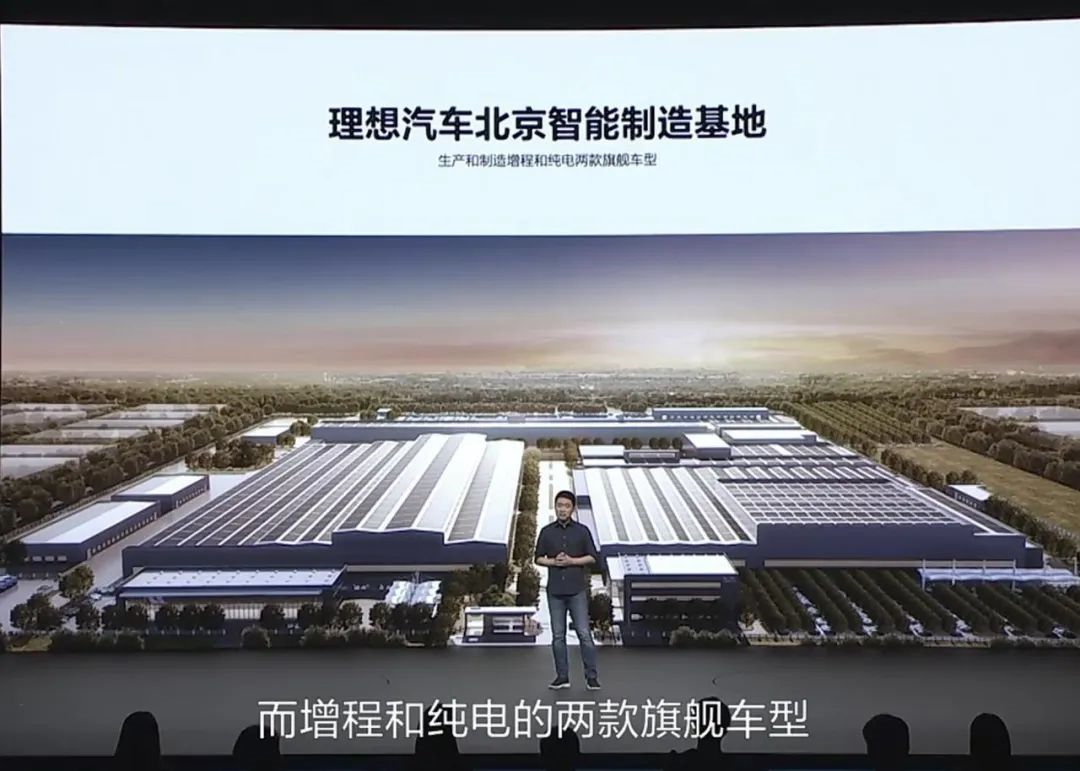
Ideal adheres to self-developed core technology, pursues a user experience in product design, precise product positioning, and a brand concept that focuses on making cars for families. The ultimate goal is to maximize the efficiency of enterprise operations. This is Ideal’s feasible methodology for creating popular models.
With the success of Ideal ONE and Ideal L9, the next step is to see how models such as L8, L7, and L6 can continue to achieve breakthroughs in sales under this systematic operation.
This article is a translation by ChatGPT of a Chinese report from 42HOW. If you have any questions about it, please email bd@42how.com.